10. Pacific Sleeper Shark (Somniosus pacificus) 14.4 feet / 4.4 m
This shark from the North Pacific feeds on bottom animals. They’re
known to eat giant octopus. They’re fairly productive and their litter
sizes are estimated to be around 300. They’re often prey to killer
whales.
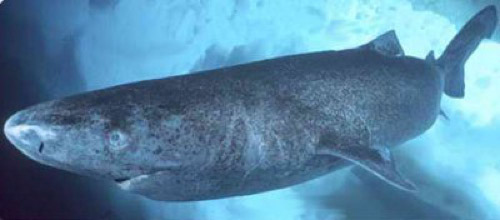
Photo: NOAA
9. Bluntnose Sixgill Shark (Hexanchus griseus) 15.8 feet / 4.8 m
This deepwater shark is found around the world in tropical and
temperate waters. It spends most of it life in deep water, where it
feeds on anything they can find, from crabs to other sharks. Females can
give birth to over 100 pups at once.
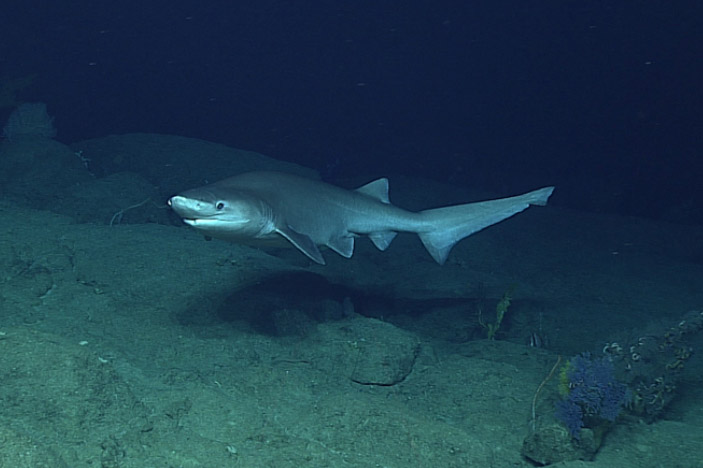
Picture: NOAA Ocean Explorer
8. Thresher Shark (Alopias vulpinus) 18.8 feet / 5.73 m
The thresher shark has one of the biggest ranges of all sharks. It’s
found everywhere except polar waters. About half of its length is due to
their enormous tail, which they use to generate great power when they
swim.
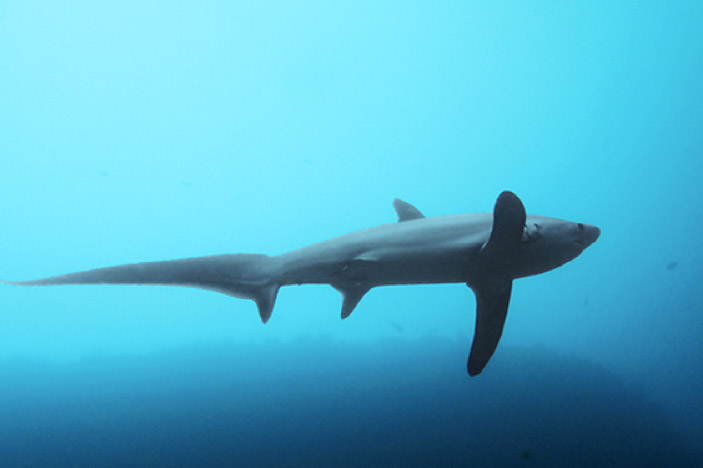
Photo: John V Lau
7. Great Hammerhead Shark (Sphyrna mokarran) 20 feet / 6.1 m
The great hammerhead is the largest species of hammerhead. It is
found in warm waters around the world. Due to their size they’re
potentially dangerous to divers, but there are no confirmed attacks on
record. Unfortunately their numbers are declining due to the shark fin
trade.
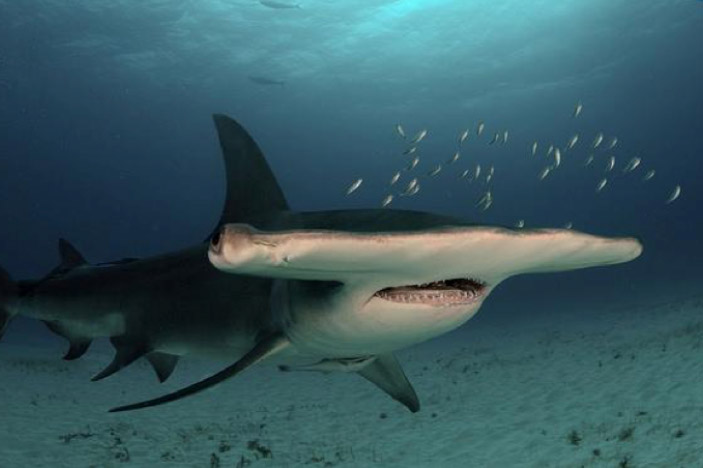
Photo: Albert Kok
6. Great White Shark (Carcharodon carcharias) 20 feet / 6.1 m
The greatest predator on Earth, the great white is famous worldwide
for hunting ability. They feed mostly on mammals like seals, dolphins
and porpoises, and also fish like sharks and rays. They hold the record
for the most bites on humans among all sharks, but most are exploratory
bites, where the shark is trying to figure out if they is edible. In
most cases, great sharks are more interested in fattier prey such as
seals.
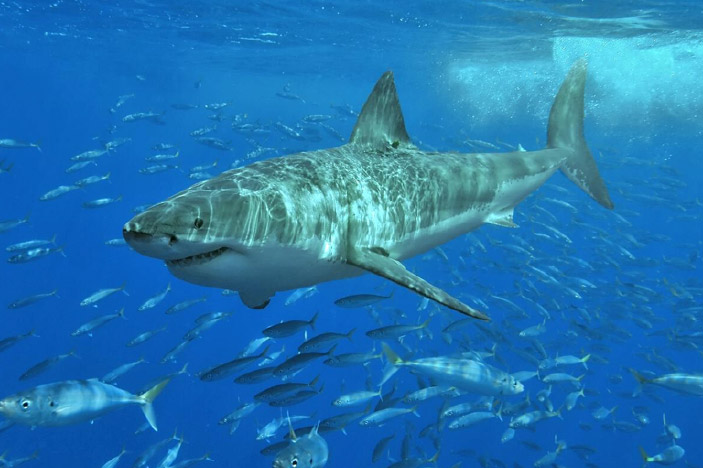
Photo: Terry Goss
5. Greenland Shark (Somniosus microcephalus) 24 feet / 7.3 m
The Greenland shark is found in the North Atlantic. It’s one of the
few filter feeder sharks and eats mostly plankton. It is extremely
long-lived, with some individuals thought to be over 300 years old. They
reach sexual maturity at around 100 years of age. This shark is
completely harmless to divers, but its meat is poisonous.
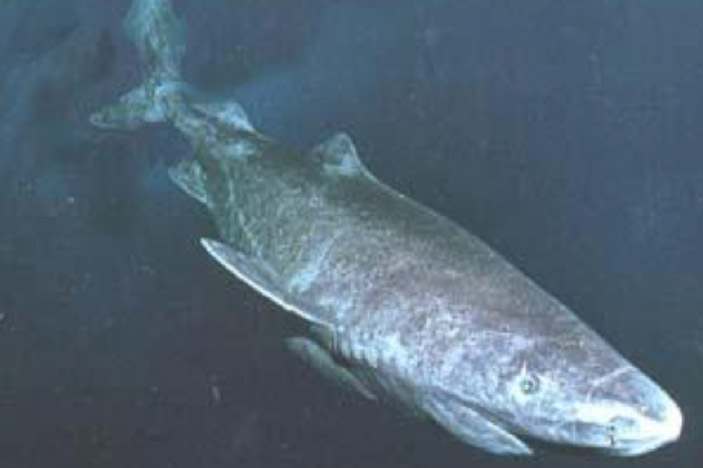
Greenland Shark. (Photo: Justin – JLplusAL)
4. Tiger Shark (Galeocerdo cuvier) 24.6 feet / 7.5 m
Tiger sharks are highly migratory and are found in most of the
world’s temperate and tropical waters. They’re nocturnal opportunistic
eaters and will eat anything from turtles to other sharks. They’re also
very productive, and can have over 80 pups in a litter. Their most
salient characteristic is the stripes on their sides. This species has
the second most recorded attacks on humans. But despite their ferocity,
they’re known to be taken by groups of killer whales.
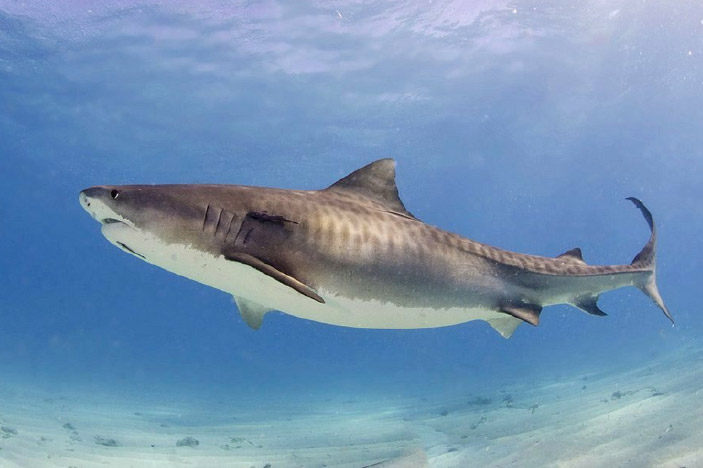
Photo: Albert Kok
3. Megamouth Shark (Megachasma pelagios) 25 feet / 7.6 meters
This giant is a plankton eater found in all oceans, but it’s most
commonly spotted in the Pacific. The largest specimen ever found was
caught and released in California.
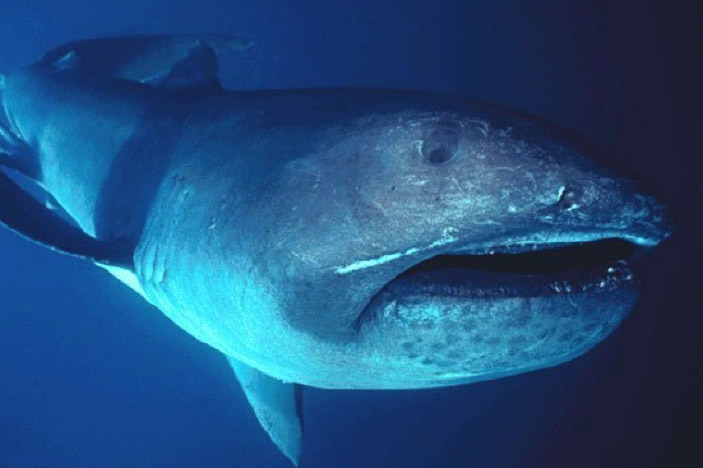
Photo: FLMNH Ichthyology/Wikimedia
2. Basking Shark (Cetorhinus maximus) 49.8 feet / 15.2 m
A filter feeder, the basking shark is big enough to swallow you
whole, but it’s completely harmless to humans. They’re diet consists of
mostly of plankton, which they consume by the pound with their huge
mouth, which can open over 1 m wide. These sharks are highly migratory
and are known to cover distances of over 9,000 Km a year.
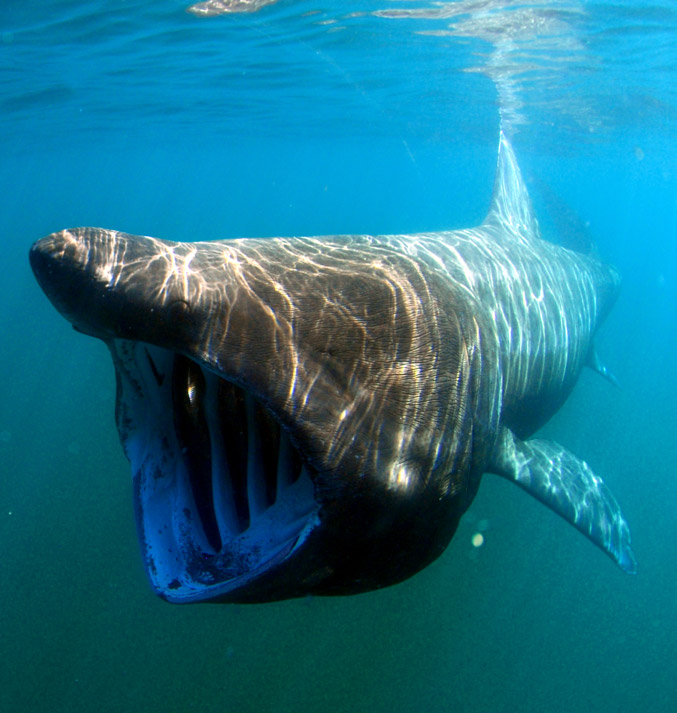
Photo: Greg Skomal
1. Whale Shark (Rhincodon typus) 55.7 feet / 17 m
The largest fish in the world, the whale shark, is an endangered
species found in most of the world’s tropical waters. Like the megamouth
sharks and the basking shark, whale sharks are filter feeders and their
diet consists almost exclusively of plankton. Because of this they’re
completely harmless to humans, and diving with whale sharks has become a
popular ecotourism attraction in several countries. While looking for
food, whale sharks move their head from side and open and close their
gills to get rid of excess of water. The largest individuals can weigh
over 30 tonnes and give birth to 300 pups.
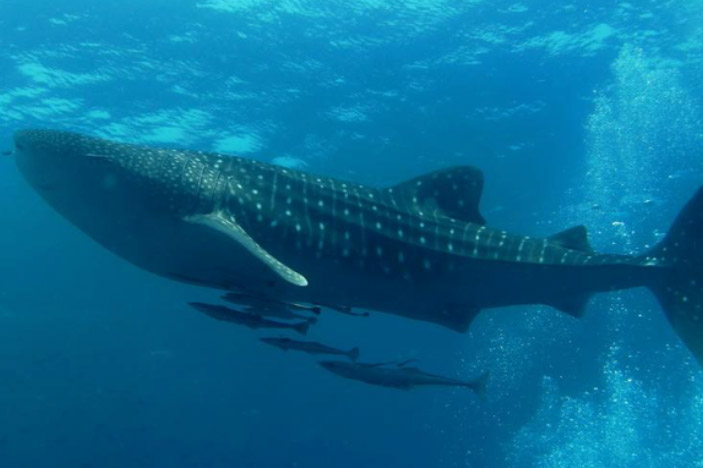
Photo: Abe Khao Lak

0 Comments